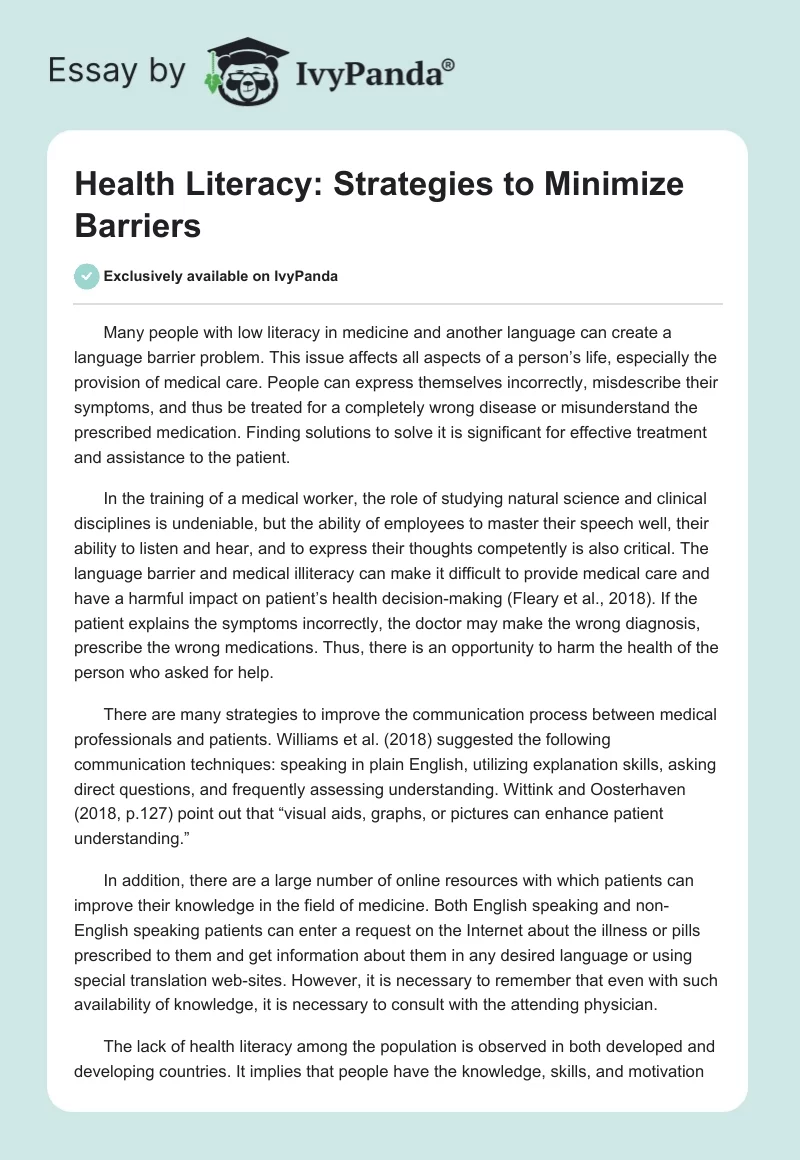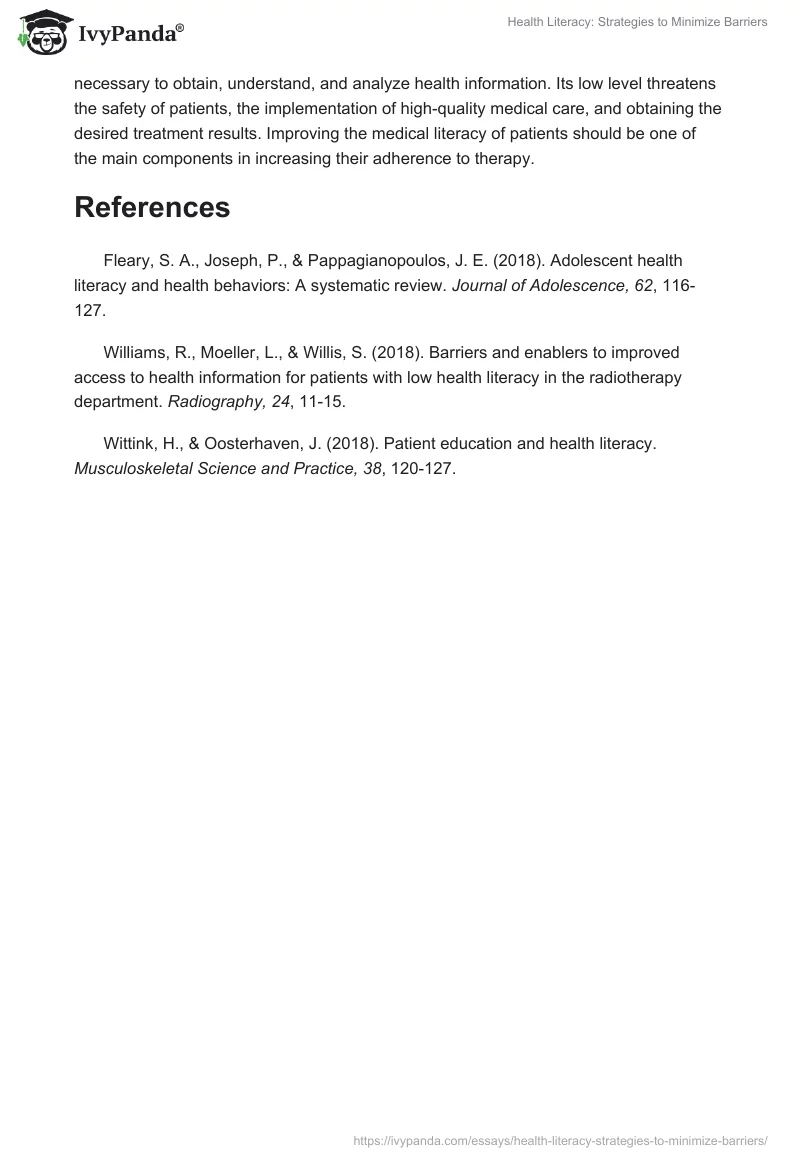Many people with low literacy in medicine and another language can create a language barrier problem. This issue affects all aspects of a person’s life, especially the provision of medical care. People can express themselves incorrectly, misdescribe their symptoms, and thus be treated for a completely wrong disease or misunderstand the prescribed medication. Finding solutions to solve it is significant for effective treatment and assistance to the patient.
In the training of a medical worker, the role of studying natural science and clinical disciplines is undeniable, but the ability of employees to master their speech well, their ability to listen and hear, and to express their thoughts competently is also critical. The language barrier and medical illiteracy can make it difficult to provide medical care and have a harmful impact on patient’s health decision-making (Fleary et al., 2018). If the patient explains the symptoms incorrectly, the doctor may make the wrong diagnosis, prescribe the wrong medications. Thus, there is an opportunity to harm the health of the person who asked for help.
There are many strategies to improve the communication process between medical professionals and patients. Williams et al. (2018) suggested the following communication techniques: speaking in plain English, utilizing explanation skills, asking direct questions, and frequently assessing understanding. Wittink and Oosterhaven (2018, p.127) point out that “visual aids, graphs, or pictures can enhance patient understanding.”
In addition, there are a large number of online resources with which patients can improve their knowledge in the field of medicine. Both English speaking and non-English speaking patients can enter a request on the Internet about the illness or pills prescribed to them and get information about them in any desired language or using special translation web-sites. However, it is necessary to remember that even with such availability of knowledge, it is necessary to consult with the attending physician.
The lack of health literacy among the population is observed in both developed and developing countries. It implies that people have the knowledge, skills, and motivation necessary to obtain, understand, and analyze health information. Its low level threatens the safety of patients, the implementation of high-quality medical care, and obtaining the desired treatment results. Improving the medical literacy of patients should be one of the main components in increasing their adherence to therapy.
References
Fleary, S. A., Joseph, P., & Pappagianopoulos, J. E. (2018). Adolescent health literacy and health behaviors: A systematic review. Journal of Adolescence, 62, 116-127.
Williams, R., Moeller, L., & Willis, S. (2018). Barriers and enablers to improved access to health information for patients with low health literacy in the radiotherapy department. Radiography, 24, 11-15.
Wittink, H., & Oosterhaven, J. (2018). Patient education and health literacy. Musculoskeletal Science and Practice, 38, 120-127.


